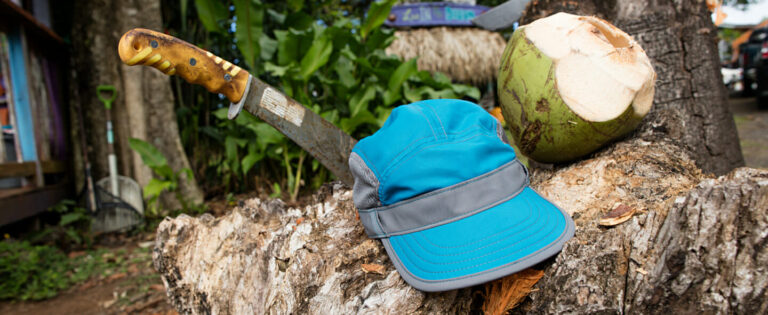Have you spent a weekend wild camping in late August freezing to death, despite the fact that your sleeping bag has a limit indication of 0°C? That should easily be enough for single-digit temperatures during the night, right?
Good question, since the temperature indications of manufacturers can be quite confusing.
Here’s a nice little introduction to the complexities of temperature standards for sleeping bags.
Whether your focus is on longer summer trails or high mountain ridges, we are extremely lucky to be able to call this beautiful European playground home. From our base in Germany not only is it home to many beautiful outdoor spots, it is also a country with many practical standards. This is also true of sleeping bags. A few clever people in test labs created EN 13537. It specifies the „requirements for sleeping bags“ for sports and leisure activities with respect to various criteria. Among other things, this standard also regulates how the temperatures have to be specified and how this data is collected. This allows you to easily and conveniently compare the various sleeping bags according to temperature indications.
However, the certification does not include expedition sleeping bags, military sleeping bags or sleeping bags for children. They have different requirements, which can’t be determined using the standard procedure.
How are the measurements taken? The theory!
Now we’re getting technical, but that’s what it takes for comparable measurements! When the measurements are taken in a laboratory, using life-sized mannequins which correspond to an average man (25 years old; 70 kg; 1.73 m) and an average woman (25 years old; 60 kg; 1.60 m). These are put on a sleeping pad in a climate chamber with standardized surroundings. The mannequin is clothed in underwear and a beanie and heated to body temperature. Different sensors are then used to take temperature measurements at different points to determine the thermal insulation. Four pieces of information are derived from this data.
- The upper limit (T max): This value is almost never used, as it indicates the point where a human will start sweating, in which case you would open the sleeping bag anyway. So this value doesn’t have much practical relevance.
- The comfort zone (T comf): This value indicates the temperature at which the average woman is not quite cold and sleeping comfortably in the sleeping bag.
- The lower limit (T lim): Up to this temperature, the average man will sleep in the sleeping bag without getting too cold.
- The extreme zone (T ext): At this temperature, it is about survival for the average woman, the temperature is almost unbearable and the risk of hypothermia is very high.
It can be pretty confusing, as you need to look at different values depending on whether you’re a man or a woman. As a result, some manufacturers have started displaying separate values for women and men on their websites.
And what about real life far away from the laboratories?
Theory and practice don’t always go hand in hand, but you have to be able to compare the sleeping bags somehow. The most reliable temperature indication is the comfort zone (T comf). Whether you’re male or female, this is the value you should always look out for if you want to avoid unpleasant surprises and cold, sleepless nights. However, this value can only give you a rough idea of what to expect. There are simply too many factors that can affect whether or not you have a comfortable night’s sleep and whether or not the temperature indications will apply to you. The shape of the sleeping bag, the use of a liner and even your physical condition can all have an effect on how you experience the temperature inside the sleeping bag.
People who exercise frequently freeze less
On the one hand, this is because the heat-producing muscle mass is more pronounced. On the other hand, it’s because the body’s heat production is reduced when you are exhausted. Trained athletes can tolerate a few degrees less in the same sleeping bag.
At home or in a tent
If you always spend your nights in a well-tempered bedroom and close the window in the evening, you will get colder. People who regularly sleep outdoors, on the other hand, are more accustomed to the cold and tolerate it better. So it is better to open the window in winter or sleep on the balcony.
Experience
This is reinforced by the fact that experienced outdoor sleepers make better use of the sleeping bag’s insulating capacity. The reason is simple: experience has taught them how to use it properly, how to set up their campsite and what clothing is right for them.
Men and women are different
As is often the case: men and women are different…also in the percentage of muscles that generate heat. The result: the heat output in relation to body weight is lower in women than in men. This can be as much as 5°C. As already mentioned, this circumstance is already taken into account by some manufacturers in the labelling with separate values.
Age: young people freeze less
Young people (meaning everyone up to about 25 years of age) have a comparatively higher metabolic rate. As a result, they generate more heat than the slightly older generation – and thus tolerate a sleeping bag that is not quite as well insulated. Children do not have the same natural heat control as adults. In addition, they have a very large heat-radiating skin surface in relation to their body weight.
Energy reserves
Touring consumes energy that the body has to provide. Extremely slim people sometimes burn more calories than can be reabsorbed through food. Stronger people, on the other hand, can draw on their reserves and therefore freeze less quickly. Here is a numerical example: a person weighing 50 kg has a heat output of about 46 W – someone weighing 80 kg has 74 W. However, both need about 37°C to feel comfortable and thus need sleeping bags with different thicknesses of insulation.
It depends on the shape
If a son borrows his dad’s sleeping bag that is too big, he will get cold feet. If the sleeping bag is too big, the air bubble that needs to be heated is also bigger and the bearable temperature is a few degrees higher. So, the more you fill your sleeping bag, the colder the outdoor temperature can be.
Fill, padding and maintenance – crucial factors when it comes to temperature
Of course, the type of fill can also have an influence on the temperature indications, but not on the standardized laboratory indications as these results are designed to be comparable. But anyone who has ever been camping in the winter and has used a down sleeping bag knows that fill power can have a huge impact. For example, sweat and condensation during sleep can do a lot of damage to the down. It can clump together and is then no longer able to keep you warm. Vapour Barrier Line (VBL) bags are recommended in this case. It is these sorts of things that cannot be measured in a lab or indicated by a manufacturer.
The sleeping pad also has a big influence on temperature as well as comfort. Everything you need to know can be found here. Temperature sensation will be higher or lower depending on how well the padding insulates.
The correct maintenance and storage also has an influence on the thermal output of a sleeping bag. Why should it be different from any other type of outdoor clothing and equipment? Here, we have summarized how to care for your sleeping bag in order to get the most out of it for as long as possible.







